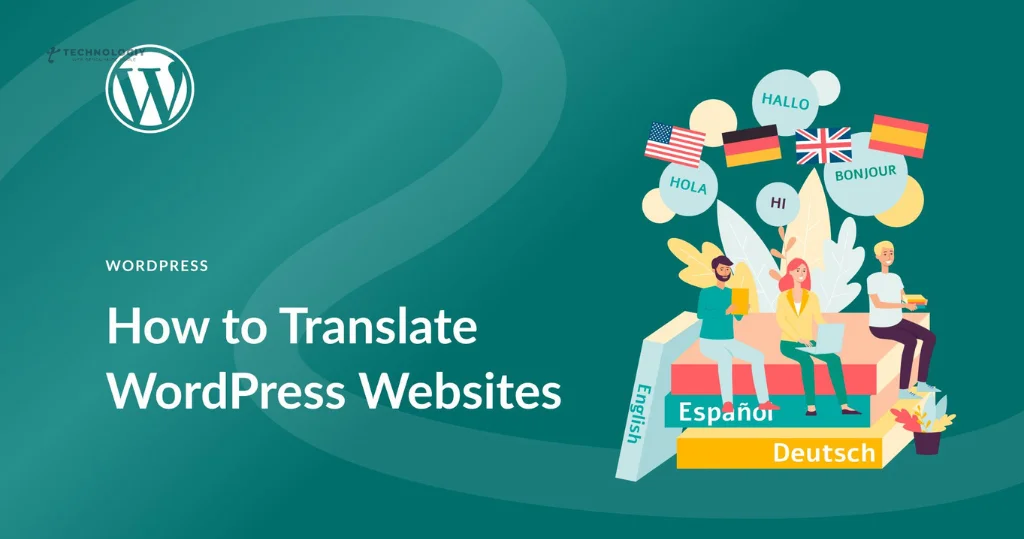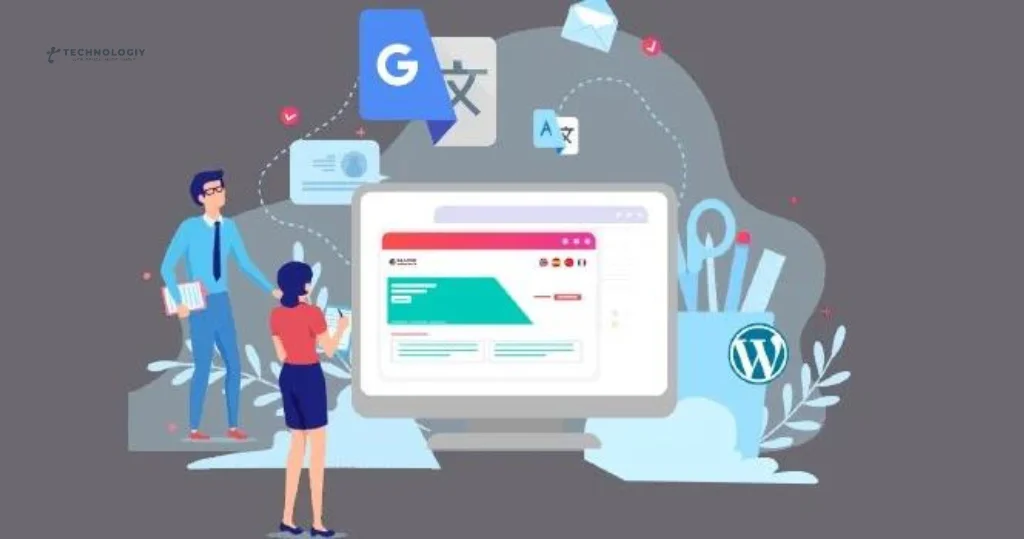The Ultimate Guide to Translate WordPress Website: Everything You Need to KnowAre you looking to expand your online presence and reach a global audience? Translating your WordPress website is the way to go! In this ultimate guide, we will cover everything you need to know to successfully Translate WordPress Website and make it accessible to users from around the world. So, let’s dive right in!
Why Translate WordPress Website?
Expanding your website’s reach beyond your local audience has numerous benefits. By Translate WordPress Website, you can:
Increase your website traffic:
Translating your website allows you to tap into new markets and reach a wider audience, potentially increasing your website’s traffic.
Boost user engagement:
When users can access your website in their preferred language, they are more likely to engage with your content, leading to increased user satisfaction and improved conversion rates.
Improve SEO:
Translate WordPress Website can also have a positive impact on your search engine rankings. By targeting specific keywords and optimizing your translated content, you can improve your website’s visibility in different languages.
Getting Started with Translate WordPress Website:
Now that you understand the benefits of Translate WordPress Website, let’s explore the steps you need to take to get started:
Choose a translation method:
There are several ways to Translate WordPress Website, including manual translation, using a translation plugin, or hiring a professional translator. Consider your budget, time constraints, and the level of accuracy required when selecting a translation method.

Select a translation plugin:
If you opt to use a translation plugin, there are several options available. Look for plugins that offer features like automatic translation, support for multiple languages, and seamless integration with your WordPress theme.
Plan your content structure:
Before translating your website, it’s important to plan your content structure. Consider which pages, posts, and other elements need to be translated, and create a clear roadmap for organizing your translated content.
Optimize your translated content:
When Translate WordPress Website, it’s essential to optimize your content for each target language. Conduct keyword research to identify relevant SEO keywords in your target language and incorporate them naturally into your translated content.
Test and review:
Once you have translated your website, thoroughly test and review the translated versions. Check for any formatting issues, broken links, or errors in the translated content. It’s also a good idea to gather feedback from native speakers to ensure the accuracy and quality of your translations.
Maintaining Your Translate WordPress Website:
Congratulations! You have successfully Translate WordPress Website. However, the work doesn’t stop there. To maintain your translated website and ensure a seamless user experience, follow these tips:
Regularly update your translations:
As your website evolves, make sure to update your translated content accordingly. This includes updating product descriptions, blog posts, and any other content that may have changed.
Provide language switcher options:
Make it easy for users to switch between languages by implementing a language switcher on your website. This allows users to choose their preferred language and navigate your website effortlessly.
Monitor website performance:
Keep an eye on your website’s performance metrics, such as traffic, user engagement, and conversion rates. Analyze the data to identify areas for improvement and make necessary adjustments to optimize your translated website.
Engage with your international audience:
Interact with your international audience by responding to comments, emails, and inquiries in their language. This personal touch can go a long way in building trust and establishing a loyal customer base.
Translate WordPress Website is a powerful way to expand your online presence and reach a global audience. By following the steps outlined in this ultimate guide, you can successfully translate your website and unlock new opportunities for growth. Remember to choose the right translation method, optimize your content, and maintain your translated website for long-term success. Happy translating!
SEO Tips for Translate WordPress Website and Boosting International Traffic:
Are you looking to expand your online presence and reach a global audience? Translate WordPress Website can be a game-changer when it comes to boosting your international traffic. In this blog post, we will share some valuable SEO tips to help you effectively Translate WordPress Website and attract more visitors from around the world. So, let’s dive right in!
Choose the Right Translation Plugin or Service:
When it comes to Translate WordPress Website, it’s essential to select the right translation plugin or service. Look for a solution that is easy to use, reliable, and SEO-friendly. Some popular options include WPML, Polylang, and Weglot. These plugins not only offer seamless translation capabilities but also ensure that your translated content is optimized for search engines.
Optimize Your URLs for Translated Pages:
To ensure that search engines can crawl and index your translated pages correctly, it’s important to optimize your URLs. Use language-specific URLs that reflect the translated content. For example, if you’re translating your website into French, the URL for a specific page could be “yourwebsite.com/fr/page-name”. This will help search engines understand the language and relevance of your translated content.
Conduct Keyword Research for Each Target Language:
Keyword research is a crucial step in optimizing your translated content for search engines. Conduct keyword research specifically for each target language to identify the most relevant and high-ranking keywords. Use tools like Google Keyword Planner or SEMrush to find popular keywords in your target languages. Incorporate these keywords naturally into your translated content, including page titles, meta descriptions, headings, and body text.
Ensure Proper Translation of Meta Tags and Alt Text:
Meta tags and alt text play a significant role in optimizing your website for SEO. When Translate WordPress Website, pay attention to translating meta tags (title tags and meta descriptions) and alt text for images. Ensure that these elements accurately reflect the content of the page in the target language, while still incorporating relevant keywords.
Localize Your Content:
Localization goes beyond translation. It involves adapting your content to suit the cultural preferences and norms of your target audience. When Translate WordPress Website, consider localizing elements such as dates, currencies, and units of measurement. This will create a more personalized and relevant experience for your international visitors, ultimately boosting your website’s credibility and user engagement.
Build High-Quality Backlinks for Translated Content:
Backlinks are a crucial factor in SEO, regardless of the language. When translating your WordPress website, it’s essential to build high-quality backlinks for your translated content. Reach out to reputable websites and bloggers in your target countries and request them to link to your translated pages. This will not only drive targeted traffic to your website but also improve your search engine rankings in those specific regions.
Monitor and Analyze Your Translated Traffic:
Once you have translated your WordPress website and implemented the above SEO tips, it’s crucial to monitor and analyze the performance of your translated content. Use tools like Google Analytics or SEMrush to track your international traffic, conversion rates, and user engagement. This data will help you identify areas of improvement and make necessary adjustments to optimize your website’s performance in different languages.
In conclusion, Translate WordPress Website can significantly boost your international traffic if done correctly. By following these SEO tips, you can ensure that your translated content is optimized for search engines, resonates with your target audience, and ultimately drives more visitors to your website from around the world. Don’t miss out on the opportunity to expand your online presence globally – start translating your WordPress website today!
Step-by-Step Guide to Translating Your WordPress Website:
Are you looking to expand your online presence and reach a wider audience? One of the most effective ways to do that is by translating your WordPress website. By localizing your content, you can connect with users from different regions and cultures, and enhance their overall experience on your site. In this step-by-step guide, we will explore the power of localization and how you can Translate WordPress Website to attract a global audience.
Step 1: Assess Your Website’s Localization Needs:
Before you begin the translation process, it’s important to assess your website’s localization needs. Consider which languages your target audience speaks and in which regions you want to expand. This will help you determine the extent of translation required and the languages you need to prioritize.
Step 2: Choose a Translation Method:
There are several ways to Translate WordPress Website. You can opt for manual translation, where you hire professional translators to translate your content. Alternatively, you can use translation plugins or services that automate the process. Choose a method that suits your budget, resources, and timeline.
Step 3: Install a Translation Plugin:
If you decide to use a translation plugin, you’ll need to install one that is compatible with your WordPress site. Some popular options include Weglot, Polylang, and WPML. These plugins make it easy to translate your website content, manage multiple languages, and provide a seamless user experience.
Step 4: Set Up the Plugin:
Once you’ve installed a translation plugin, you’ll need to set it up according to your website’s requirements. This typically involves selecting the languages you want to translate your content into, configuring language switchers, and customizing the translation settings.
Step 5: Translate Your Content:
Now comes the actual translation process. Whether you choose manual translation or use a plugin, make sure to translate every aspect of your website, including page content, menus, widgets, and any other elements that appear on your site. Keep in mind that accurate and culturally appropriate translations are key to connecting with your target audience.
Step 6: Test and Review:
After translating your content, it’s crucial to thoroughly test and review your translated website. Check for any formatting errors, broken links, or missing translations. Pay attention to language nuances, as certain phrases or idioms may not translate directly. Make necessary edits and adjustments to ensure a smooth user experience.
Step 7: Optimize for SEO:
To maximize the visibility of your translated website, it’s important to optimize it for search engines. Research keywords relevant to your target audience and incorporate them into your translated content, meta tags, URLs, and image alt tags. This will help improve your website’s ranking in search engine results and attract organic traffic.
Step 8: Monitor and Update:
Localization is an ongoing process. It’s important to monitor the performance of your translated website and gather user feedback. Stay updated with language trends, cultural changes, and user preferences to ensure your website remains relevant and engaging for your global audience.
In conclusion, translating your WordPress website is a powerful way to expand your online presence and connect with a wider audience. By following this step-by-step guide, you can effectively localize your content and attract users from different regions and cultures. Remember to choose the right translation method, thoroughly test your translations, and optimize your website for SEO. Embrace the power of localization and unlock new opportunities for your Translate WordPress Website.
